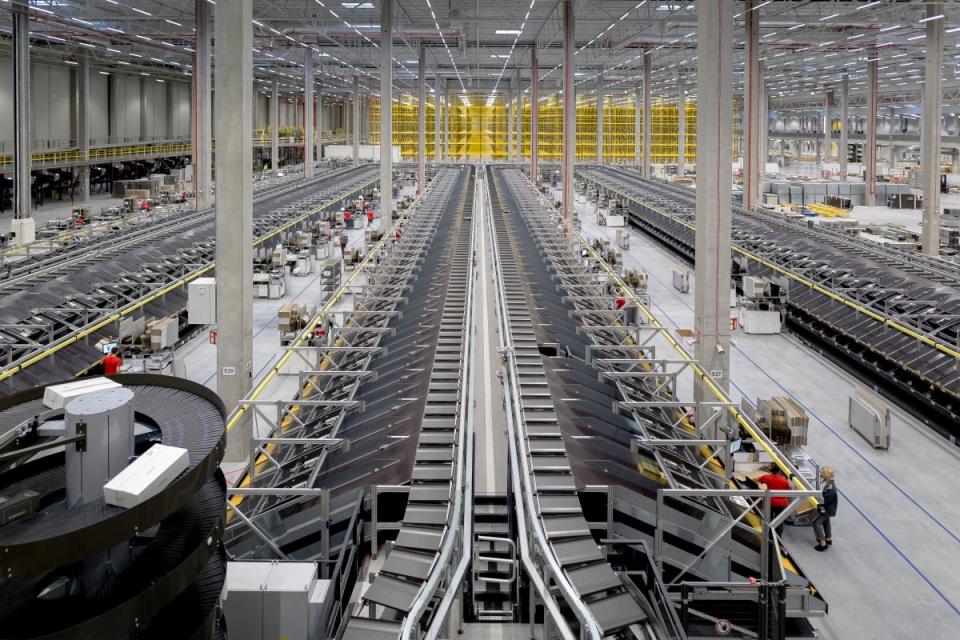Zalando Says Platforms Are Out, Ecosystems Are In

This story has been updated.
PARIS — Zalando is angling for a bigger chunk of Europe’s burgeoning markets for sporting goods and childrenswear.
More from WWD
Pinterest and eComID Each Create New Tech to Improve Fit and Reduce Product Returns
Emerging Tech Advancements Are Paving the Way in the Retail Industry
Rokt Goes Racing With Red Bull's F1 Academy Driver Hamda Al Qubaisi
Reaching beyond fashion and beauty into more lifestyle categories — and ramping up the entertainment and inspiration quotient on screens — are among chief vectors to transform the German company from being a transactional e-commerce platform into an “ecosystem” for fashion and lifestyle shopping and inspiration.
Zalando unveiled the new strategy at a press conference in Berlin on Wednesday, also talking up plans to offer fashion brands its logistics infrastructure, operating systems and software solutions on and off its platform.

The new thrust came with the promise of midsingle-digit growth prospects for the coming years, enough to overshadow weak 2023 sales and send shares in Zalando up by as much as 14 percent in trading on the German stock exchange.
Underscoring anemic demand for fashion in online channels, Zalando reported revenues in 2023 declined 1.9 percent to 10.1 billion euros, and its GMV, or gross merchandise volume, slipped 1.1 percent to 14.6 billion euros.
Fourth-quarter revenues dipped 3.5 percent, with GMV easing 2.6 percent.
Asked about recent trading during a Q&A session, chief financial officer Sandra Dembeck replied: “The year started the way it ended.” She noted, however, that “the start of the spring season has been very positive and that continued into March.”
Co-chief executive officers Robert Gentz and David Schneider were peppered with questions about the impact of low-cost Chinese online players Shein and Temu on Zalando’s 2023 fortunes, and future potential.
Gentz acknowledged “the phenomenon” but downplayed its impact last year, and looking ahead.
“We very much believe the future of fashion will be about brands,” stressed Schneider, dressed in a snug black T-shirt and tapered chinos.
He also brushed off suggestions that Zalando’s recent push into luxury, having added brands like Dsquared2 and Helmut Lang, looks increasingly risky in the wake of recent troubles for once-mighty online beacons like Farfetch and Matches.
“Younger consumers don’t think in these kind of buckets,” Schneider offered. “Here we see very strong potential for us.”
The two executives spent an hour explaining the new strategy, expressing their long-term bullishness about the online channel, and Zalando’s ability to seize an even bigger chunk of Europe’s 450 billion euro fashion market.
They touted that 61 percent of consumers prefer to shop at multibrand retailers, and that soon nearly half of the European population will be composed of Millennials and Gen Z, meaning buying power is shifting to digital-first consumers.
What’s more, Europe still lags the U.S. and China in terms of e-commerce penetration.
“These shifts open up big opportunities and everything we’ve built over the past 15 years allows us to capitalize on them,” Gentz said, also trumpeting Zalando’s ability to leverage its consumer data and employ generative AI to facilitate content creation, personalization and engagement.
Regarding its consumer-facing business, the executives played up Zalando’s commitment to quality via “highly relevant” brands and assortments, top-notch fit advice and ease of payment.
Schneider highlighted that of the 13,000 euros the average European household has for discretionary spending, only a fraction of that goes to fashion, beauty and wellness, with other large portions going to pets, gardening, travel, homewares and consumer electronics.
Less than half of Zalando customers currently consider the platform a venue for sporting goods or kids and family goods, markets worth an estimated 77 billion euros and 47 billion euros respectively in Europe.
“Here, we’re entering markets with tailwinds and better customer insights,” Schneider enthused.
Gentz called combining inspiration, entertainment and e-commerce the “holy grail” for online fashion players, so Zalando will invest to get more eyeballs and time spent on its platform. Tactics include AI-enabled fashion assistants who can give style ideas to consumers looking to dress for specific occasions, for example.
On the business-to-business side, Zalando plans to target mid-size to large brands looking to crack the European market by putting at their disposal its 12 logistics centers, 20 return centers and a host of software solutions. At present, 26 brands make use of Zalando’s operating system outside the platform, and B2B currently represents a 900 million euro business. These include Pepe Jeans, Marks & Spencer and Polish footwear and accessories brand Kazar.
Powered by its new strategy, Zalando is targeting a compound annual growth rate of 5 to 10 percent for revenues and GMV over the next five years.
The outlook for adjusted earnings before interest and tax as a percentage of revenue stands at 6 to 8 percent in 2028, and Zalando aims to capture 15 percent of the European fashion market with its new business-to-consumer and B2B strategies.
Adjusted EBIT in the fourth quarter of 2023 came in at 183 million euros, 16 percent ahead of consensus, according to Barclays analysts.
Best of WWD

 Yahoo Finance
Yahoo Finance 